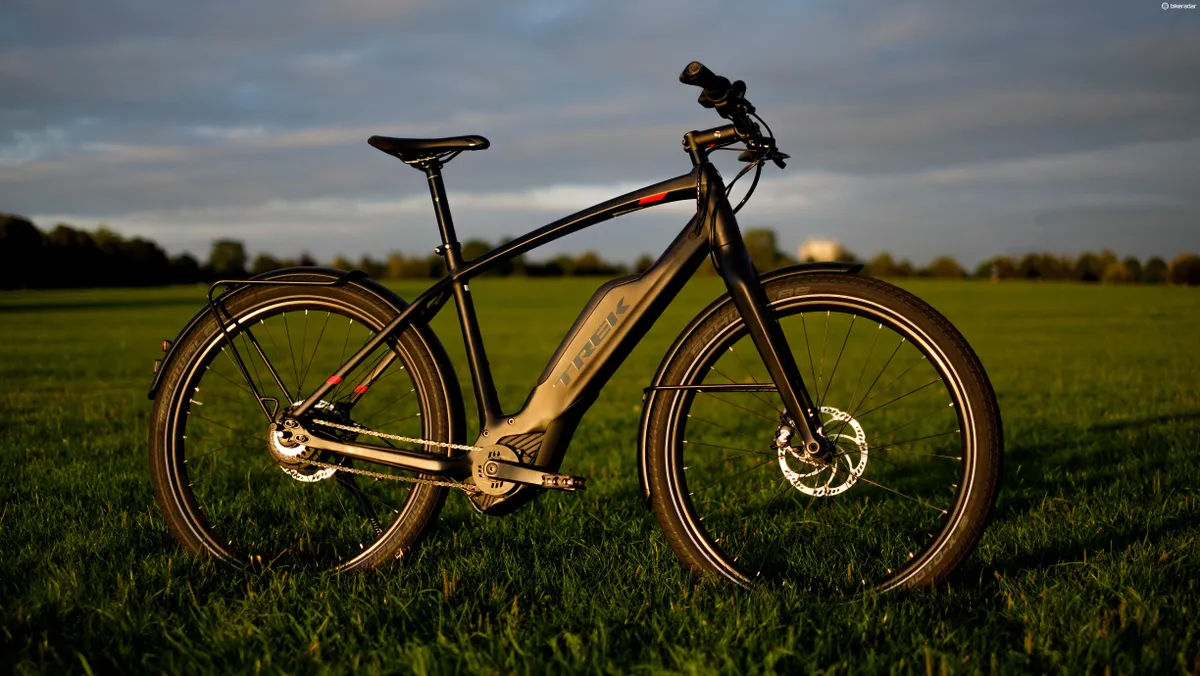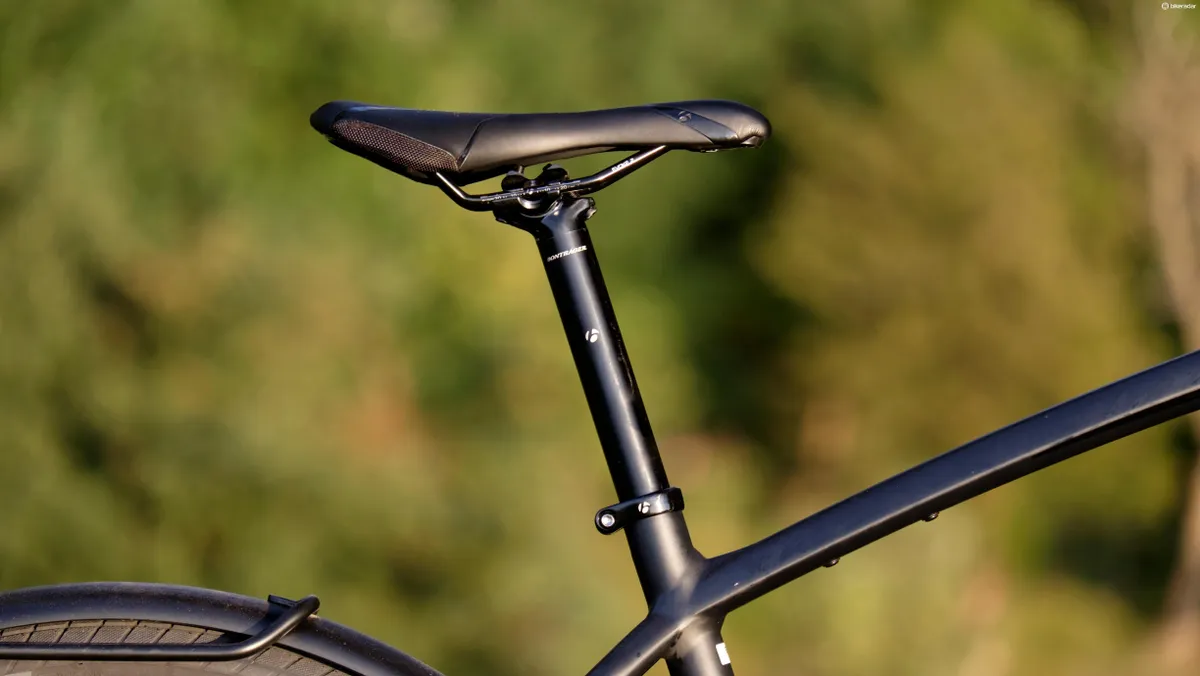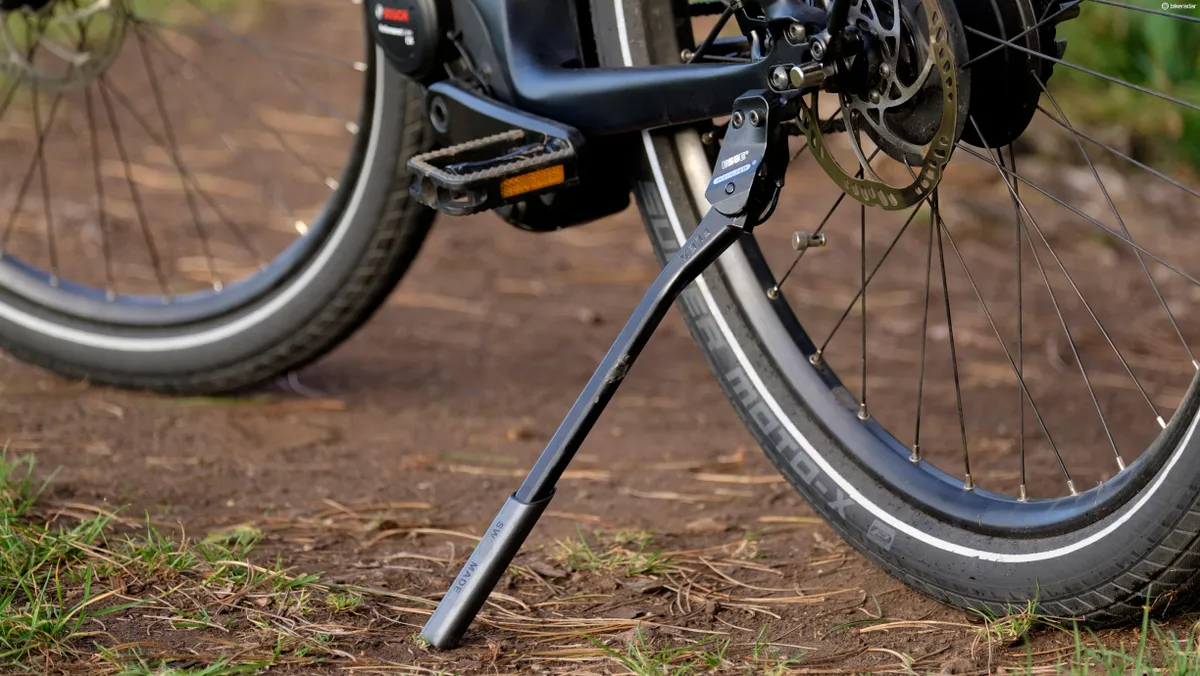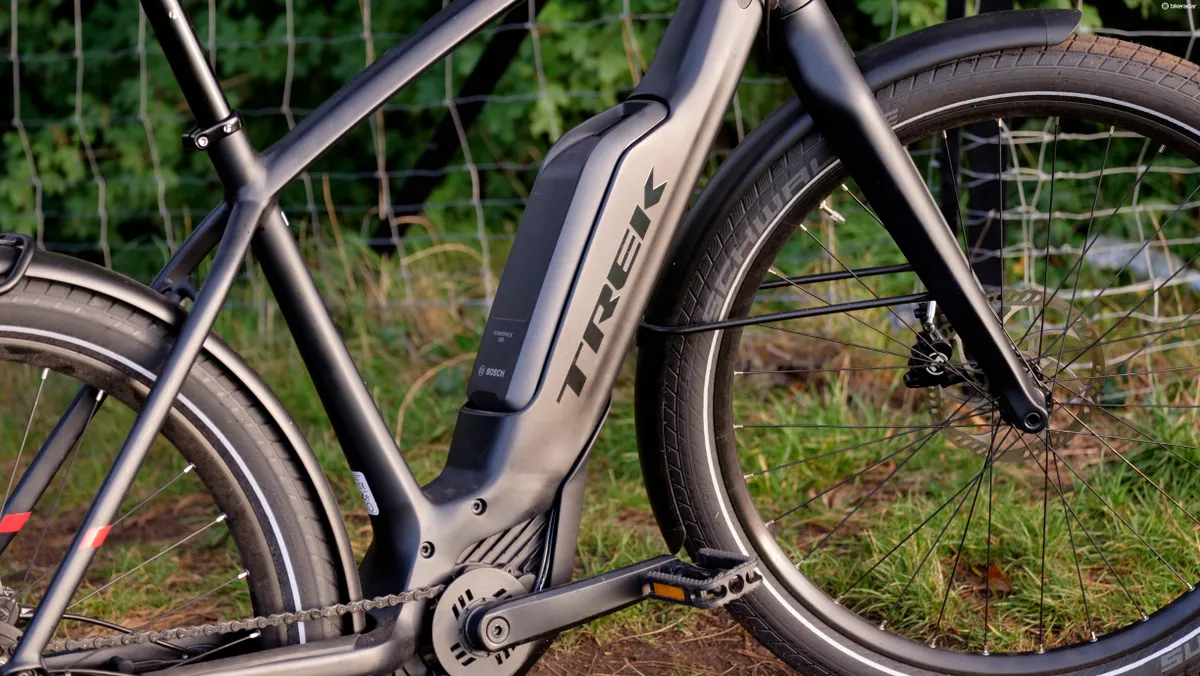Could an electric bike replace your car? That’s a question that only you can answer, but if there’s one bike that I’d recommend for that task then the Trek Super Commuter+ 9 would be it.
That’s good news for Trek, because the Super Commuter was designed specifically to do just that. It’s just a shame that its prohibitive pricing means that more people can’t get involved with the fun.
Clever integration with handling a top priority
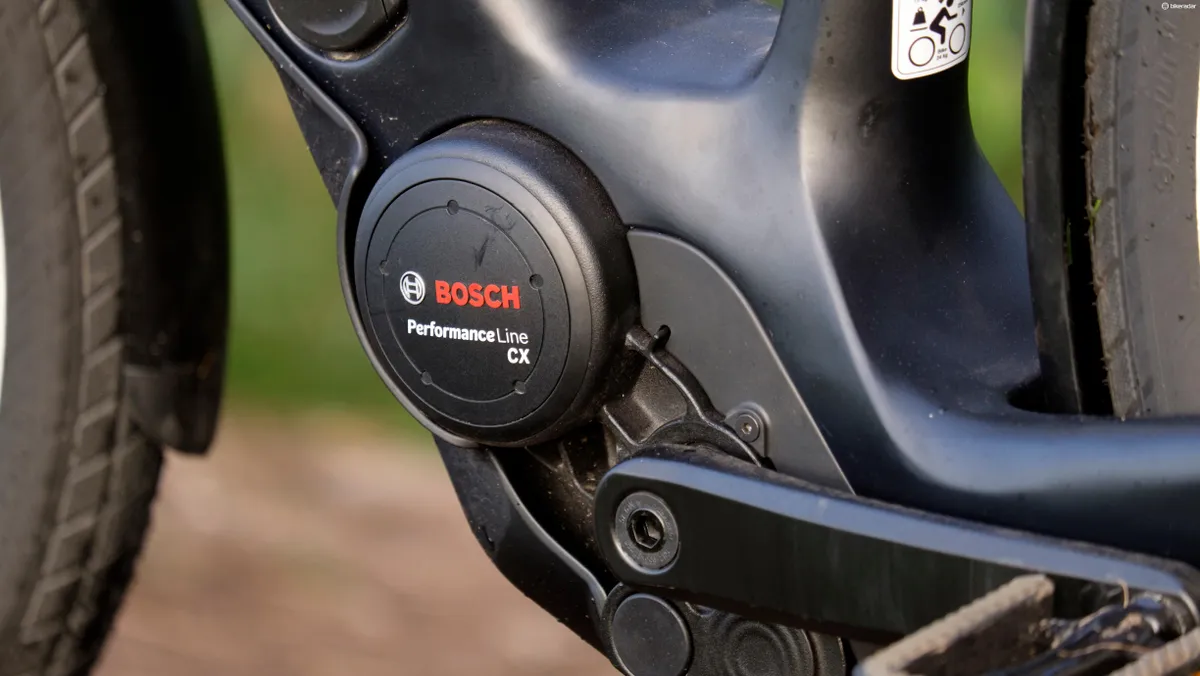
The pulsing heart of Trek's Super Commuter is the Bosch Performance CX motor. It’s placed low down to the point of hanging beneath the cranks. The battery, a neatly integrated 500Wh unit, is secured by its own Abus lock and key and is also positioned nice and low.
Shifting these components as low as possible is a deliberate effort from Trek to keep the handling of this bike in check, and it’s certainly worked – but more on that later.
Flexible assistance and a healthy range
The Bosch Purion interface at the bike’s riser handlebar provides all you need to know about the bike’s motor, its battery status and whether or not the bike’s integrated lights are on.
Flicking through the Super Commuter’s power modes couldn’t be easier and allows you to quickly choose the level of pedal assistance on offer before or during a ride. These range from a bike that’s totally without assistance all the way through to Bosch’s Turbo setting, which will give you maximum oomph but will take its toll on the battery.
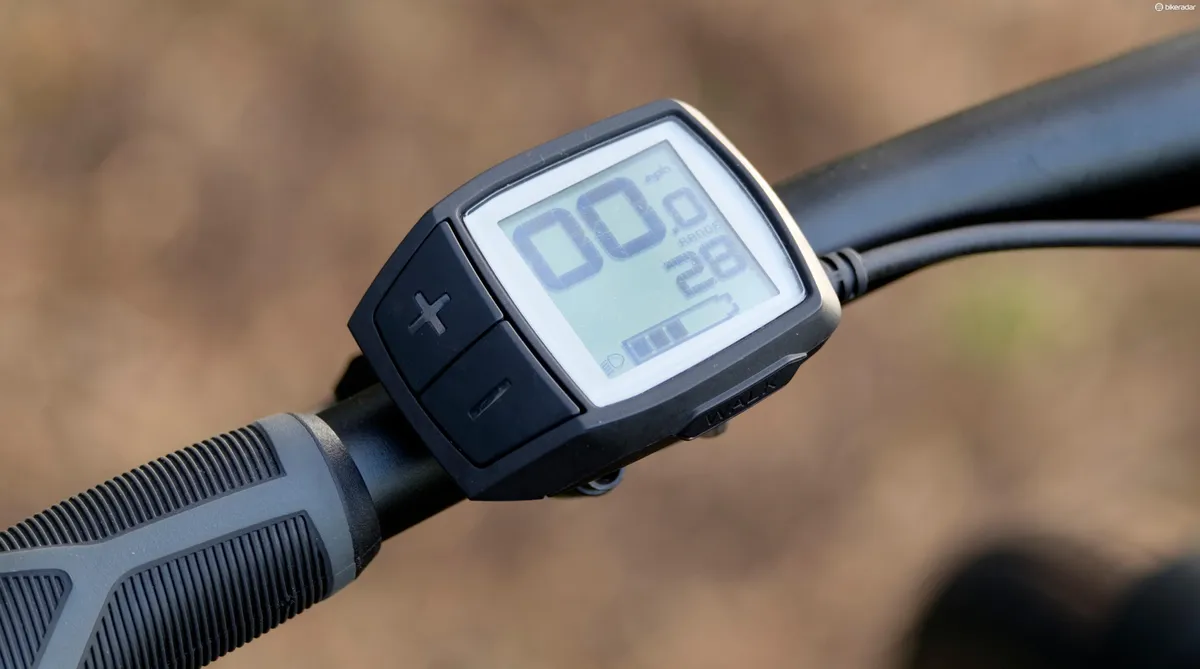
I generally enjoyed the bike most in its Sport setting, which provides noticeable but not excessive power, and means staying close to the bike’s 25 km/h limit is relatively easy regardless of the gradient in question. The Sport setting also responds to rider inputs in a pleasing way — ramp up your cadence and it’ll feed a noticeable kick to the rear wheel.
Riders who want a purer cycling experience can turn the assistance down further thanks to the motor’s ‘Tour’, and ‘Eco’ settings. Or, if you’re really in the mood for pain then you can turn the assistance off altogether, though with a tad over 25kg to power with your legs alone this option is reserved for only the brave.
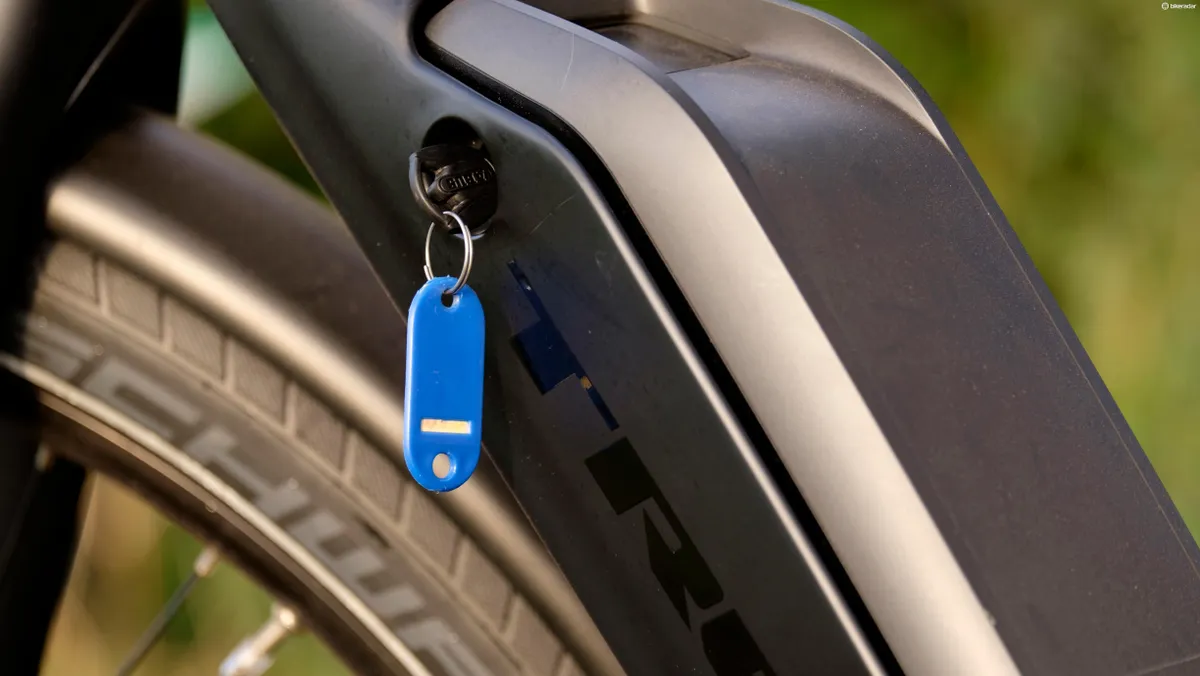
The bike will regularly try to calculate the range left from its battery, with a full charge providing between 80 and 24 miles depending on the power setting chosen.
With the bike used mostly in my favoured Sport setting, I found a return of approx. 35 miles – meaning the bike could run for approximately one working week per charge cycle on my hilly commute. When the time does come to charge the battery, this can be done with the battery within or separate from the frame, thanks to a nifty charge port on the frame.
The stout alloy frame and carbon fork are secured by bolted axles, keeping flex to an absolute minimum and leaving suspension duties to the bike’s plump 2.4in Schwalbe Super Moto-X tyres. Their balloon-like shape takes the worst out of poor surfaces without losing significant feel, though we found we had to run them close to their minimum pressure for the best ride quality.
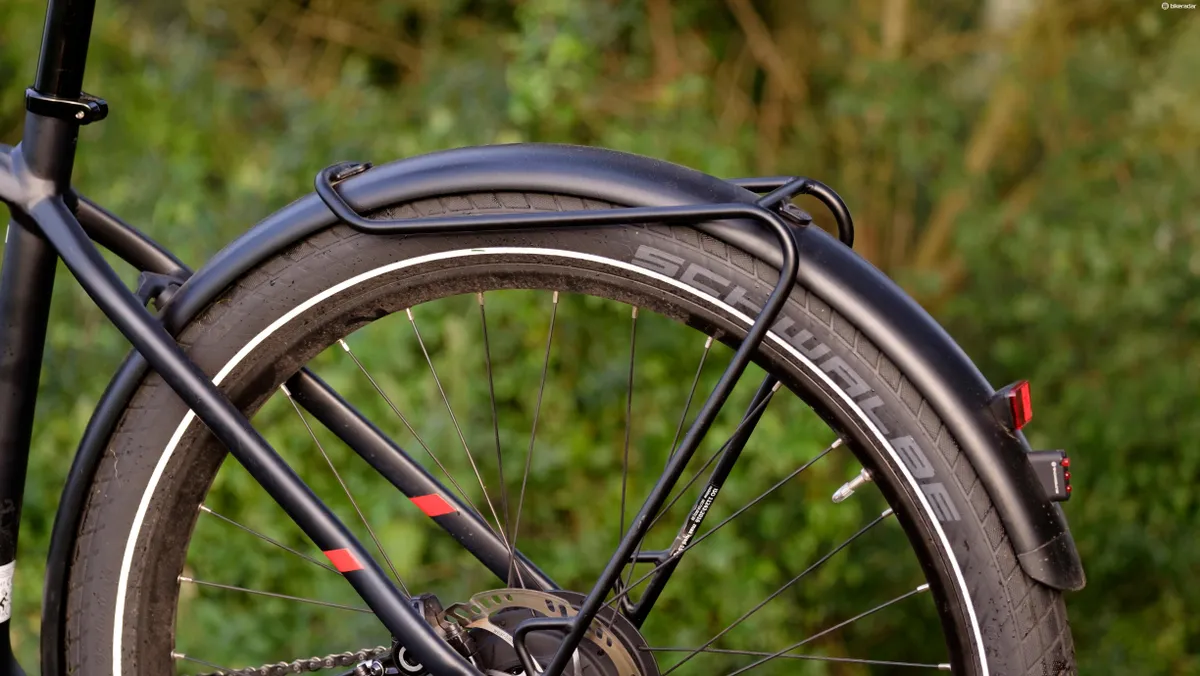
The wide rims spread the tyres out into a particularly round profile, making for a bike that loves to lean and offers consistent, confidence inspiring grip. Meanwhile, full-length mudguards mean the Trek has your back in even the worst weather.
On rougher surfaces the Super Commuter can prove a little tiring; its tyres tend to bob you up and down. For this reason, I think there's a strong case for giving the next generation Super Commuter a short travel suspension fork.
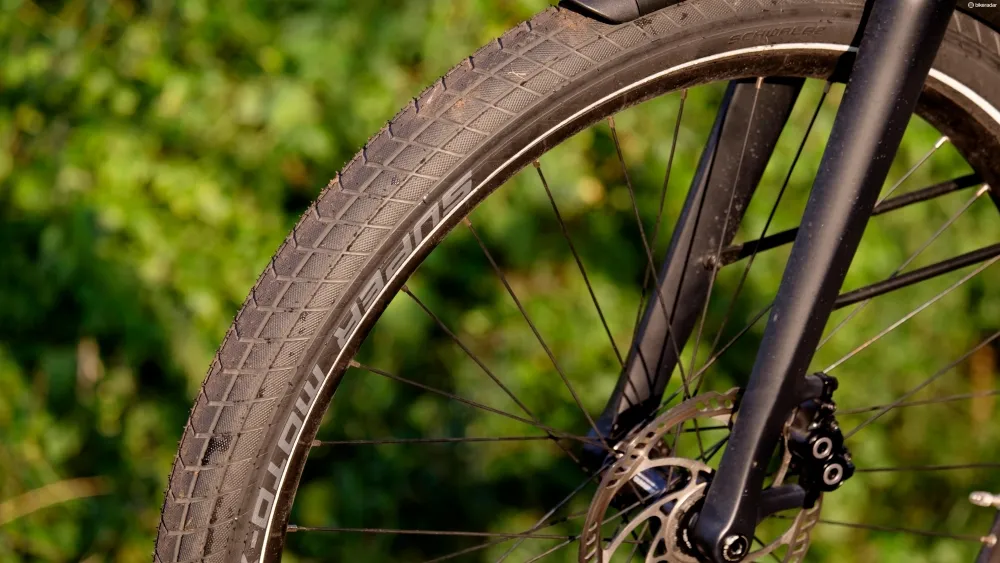
A lot of e-bikes are hampered by their drivetrains but the Super Commuter certainly is not. The Nuvinci hub gear at the rear wheel is a constantly variable component that’s controlled by a gripshift style shifter.
After a few miles, I soon found myself comfortable with the functioning of this unique drivetrain, which involves short and regular twists and an element of mechanical sympathy to work at its best.
The Nuvinci’s gear indicator is also a bit of fun — instead of boring old numbers, it demonstrates a rider tackling a gradient that flattens or steepens depending on what you do with your right hand. It’s the little things!
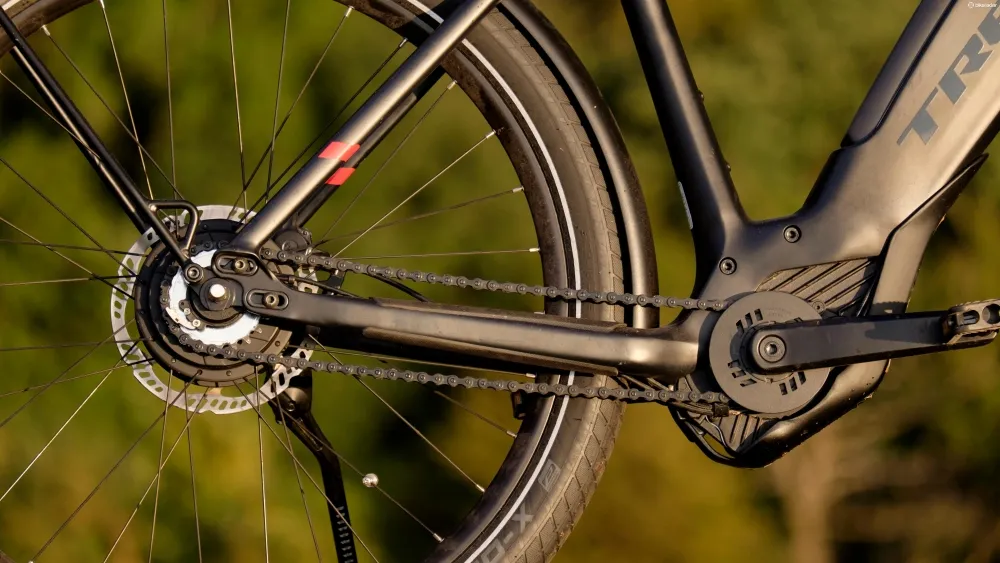
After a few hours with the Super Commuter one becomes accustomed to its power delivery, meaning you’ll soon match your cadence, power settings and the gearing in a way that’s utterly satisfying. It’s miles better than any regular derailleur drivetrain, which always ping and crunch under the load of an electric motor, better even than SRAM’s EX1 transmission.

Less impressive were the Magura MT brakes which, although powerful enough, never really offered the feel of some of their competitors. The front one really seemed to suffer with vibration at times, too.
The Super Commuter's SuperNova lights are excellent and deliver the sort of performance you'd expect from an expensive aftermarket solution but with none of the hassle thanks to clever integration.
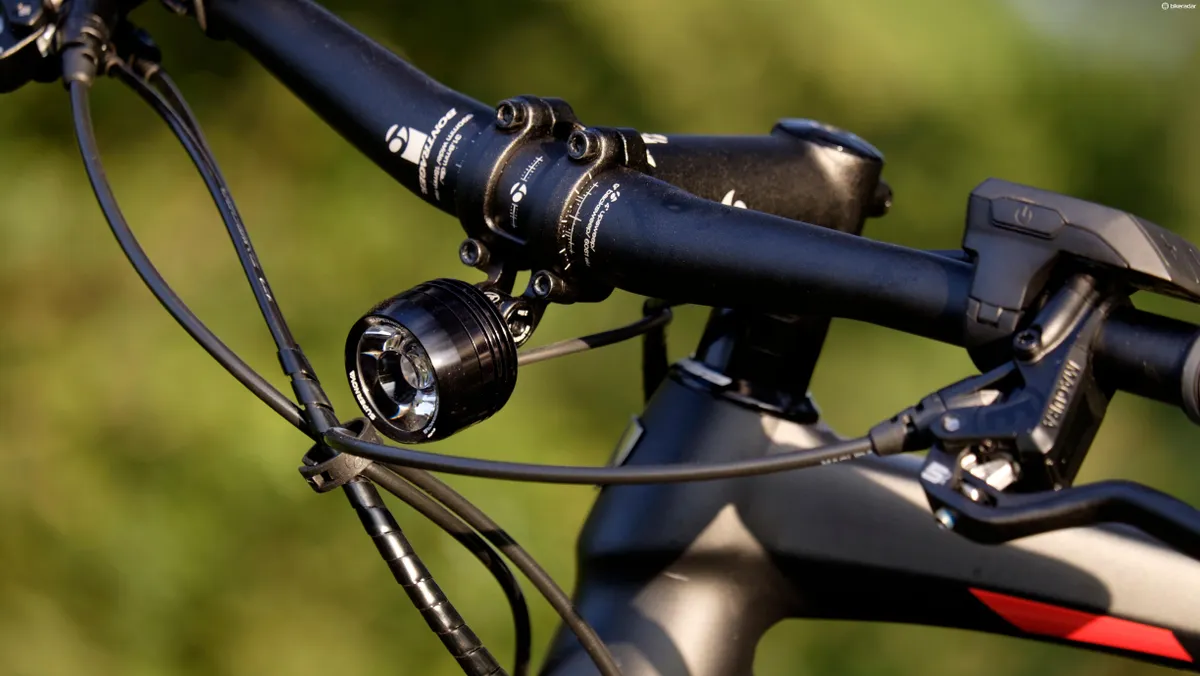
Switching to electric assistance
Swapping to a motorised bike for my commute was an interesting experience that started with having to relearn what was important with my riding. No longer did I have to worry about the height of my saddle, for example — it could be set for comfort rather than efficiency.
Similarly, the bike’s mediocre flat pedals were absolutely fine and meant I could comfortably cycle in casual shoes. In fact, one of the most enjoyable things about switching to the Super Commuter was the ability to (weather permitting) be able to ride in totally casual clothes while wearing a heavy backpack, and to arrive at my destination with no need for a shower. It's these sort of luxuries that I think people overlook when they criticise e-bikes – mostly folk who haven't ever ridden one.
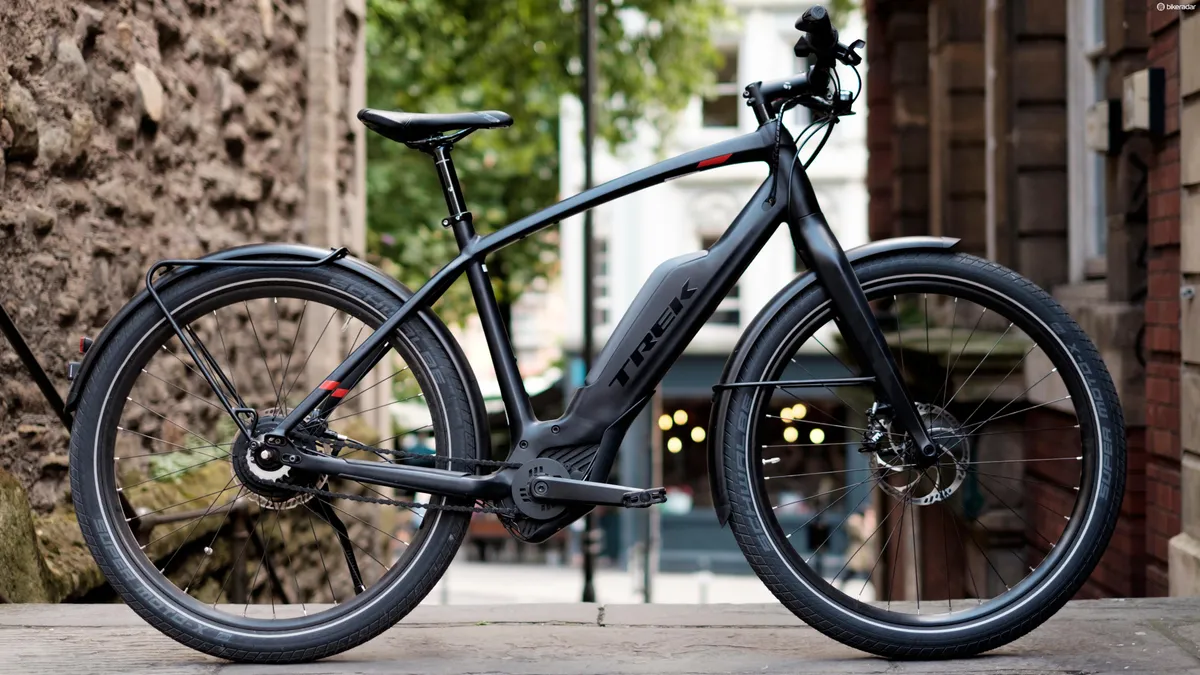
Many e-bike riders here in the UK talk of their frustrations around the 25 km/h assistance limit which in place, and it’s true that at times it sure can be annoying, but for the majority of the time I learned to live with it just fine. Averaging say 18 or 19mph on flat ground isn’t too hard for someone who is relatively fit, and down steeper hills the Super Commuter can still be worked to over 40mph if you really try.
Arguably the Trek’s closest competitor comes in the form of the Specialized Turbo Vado, and that's a bike that I have also spent a fair amount of time on. In general I think the Super Commuter is a whole lot better than the Turbo Vado, but the Trek's higher price, additional bulk and lack of suspension mean the Specialized has many merits of its own.
